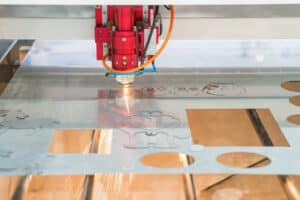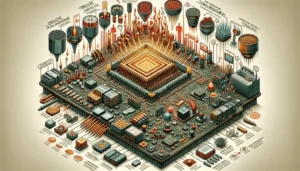News
Everything You Need to Know About Wiring for Industrial Needs
In the industrial sector, wiring plays a critical role in ensuring smooth operation of machines and systems. Electrical wiring must be properly designed and installed to maintain component safety, efficiency, and functionality.
What is Wiring and Why is it Important?
Wiring consists of a network of electrical conductors that transmit power and signals across various components and systems. It is a fundamental component in any electrical infrastructure, designed to ensure that electricity flows smoothly from one point to another.
Proper wiring is essential for several reasons: it improves the safety of electrical systems, reduces the risk of fires and malfunctions, and ensures that machines operate efficiently. In industrial settings, robust wiring is essential for maintaining productivity and preventing costly downtime. Additionally, quality wiring supports the integration of advanced technologies, making operations in various industries – medical, military, and more – more reliable and efficient.
Types of Electrical Wiring
Different types of electrical wiring serve specific needs. Often, several types of wiring are combined for a final product. Here are some common types:
- Panel wiring: Connecting various components within an electrical panel to ensure they work together to distribute power throughout the facility.
- Cable wiring: Cables are used to transmit energy and signals over distances. There are different types, including armored cables that are resistant to harsh environments and flexible cables for easy installation in tight spaces.
- Ducts wiring: Ducts that help organize and protect wires, especially useful in complex installations where many cables and electrical components need to be combined.
- Board wiring: Wiring boards, also known as printed circuit boards (PCB), are used for mechanical support and electrical connection of electronic components through conductive pathways. They are critical in the manufacturing of electronics and complex machinery.
How to Perform Electrical Panel Wiring?
- Turn off the power: Ensure that the main power supply is off to prevent electrical hazards.
- Panel installation: Install the electrical panel securely on the wall, ensuring it is easily accessible.
- Running cables: Feed the main service cables through the panel entry points. Strip the insulation from the cable ends.
- Connecting ground wires and neutral cables: Connect the ground wire to the ground bar and the neutral wire to the neutral bar.
- Installing circuit breakers: Insert and secure the breakers into the panel slots. Each breaker should match a specific circuit in the facility.
- Connecting hot wires: Connect the hot wires to the breakers. Ensure each wire is tightly secured.
- Labeling circuits: Clearly label each circuit breaker to identify which area or device it controls.
Safety Measures in Wiring Duct Installation
- Turn off power: Always disconnect the power supply before starting any installation to prevent electrocution.
- Protective equipment: Wear appropriate equipment, including gloves and safety glasses, to protect against electrical hazards.
- Secure mounting: Ensure that wiring ducts are properly installed.
- Proper routing: Route the wires neatly within the ducts to prevent cable tangling or bending that could cause wear.
- Fire safety: Use fire-resistant materials, especially in high-risk areas.
- Regular inspections: Conduct routine inspections to check for signs of wear, corrosion, or damage.
Common Techniques for Electronics Wiring
- Soldering: A common method for creating durable and conductive connections, in which a metal alloy is melted to securely connect wires and components.
- Crimping: Using a crimping tool to connect electrical connectors to wire ends. This is a fast and reliable method for creating secure electrical connections.
- Twisting: Joining wires together before soldering or connecting them to terminals helps create a strong and stable connection.
- Breadboarding: A technique for prototyping printed circuits. Allows temporary connections without soldering, making it easier to test and modify designs.
Panel Wiring Maintenance: Important Tips
Proper maintenance of electrical panel wiring is essential for safety and preventing unexpected failures. Following these tips helps promote the longevity and reliability of electrical panels while improving overall system performance.
- Tightening connections: Loose connections can cause arcing and overheating. It is important to periodically tighten all screws and parts.
- Checking for overload: Ensure that circuits are not overloaded, as this can cause overheating and potential failures. It is important to measure the current and ensure it is within safe limits.
- Cleaning the panel: Dust and debris can accumulate inside the electrical circuit, which can cause short circuits or system overheating. Therefore, regularly clean the inside of the panel using a dry cloth or air.
- Replacing damaged components: Immediate replacement of damaged wires, breakers, or other components is required to maintain system integrity.
How to Disassemble Cable Wiring?
Until now we have mainly discussed assembly, but ultimately every wiring also needs to know how to disassemble. Here is how it is done:
- System shutdown: Disconnect the power supplies to prevent electrocution.
- Wire labeling: Before disassembly, label each wire to document the activity and facilitate future reconnection.
- Disconnecting connectors: Release and remove all connectors or plugs attached to the cables.
- Cutting cables: Use wire cutters to release cable ties or security straps without damaging the wires.
- Removing cables: Carefully pull the cables out of their routing channels or conduits.
- Storage: Neatly collect the removed cables and store them properly for future use or disposal.
Questions and Answers About Wiring
What Common Problems Exist in Wiring Processes?
Common problems in wiring can include loose connections, overload, poor insulation, improper routing, and corrosion.
How to Choose the Right Materials for Cable Wiring?
Materials are chosen based on conductor type (e.g., copper or aluminum), environmental suitability, cable type appropriate for the application, and compliance with industry standards.
Who Performs Electronics Wiring?
Electronics wiring is typically done by electricians, electronics technicians, and engineers. At Adamti, every wiring process is performed by the most experienced experts.
More News Articles



